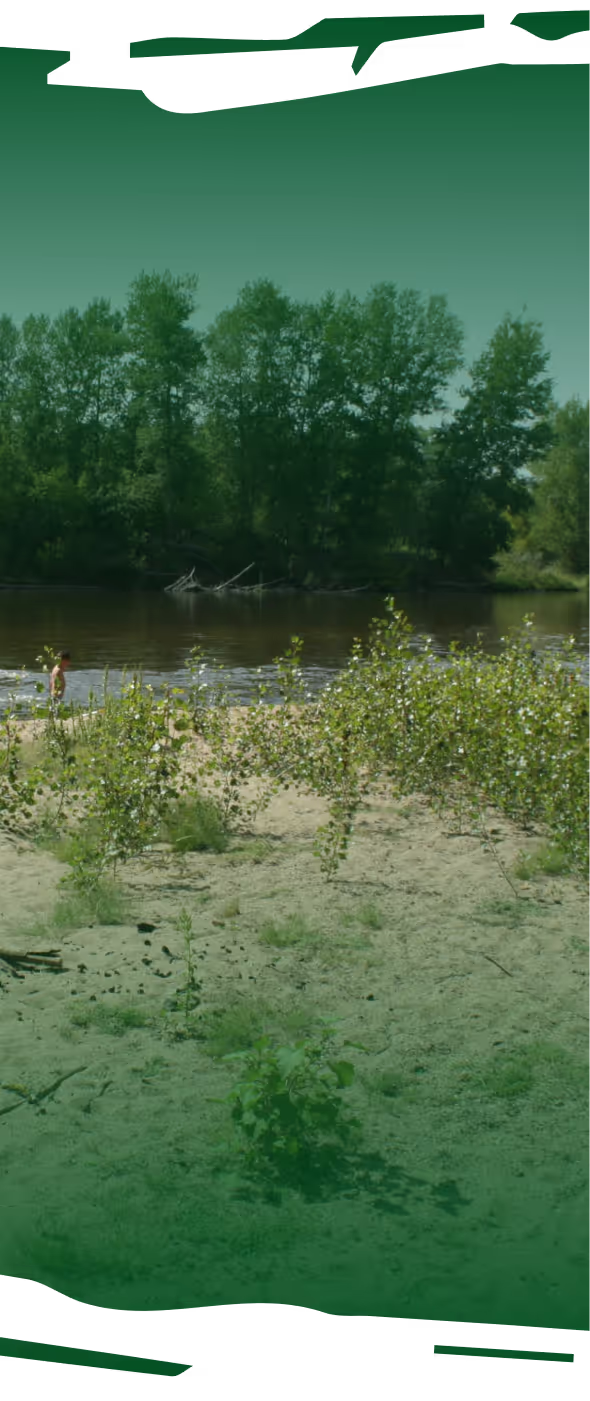How to steer a canoe? Steering guide
Steering a canoe relies on three main techniques: paddling more on one side to turn, using the paddle as a rudder, and mastering the J-stroke to maintain a straight course. The person in the back steers, while the person in the front provides power. Whether you're out for a casual ride or on a canoe rental Loire adventure, proper steering turns a chaotic trip into a smooth and enjoyable experience!
Basics of canoe navigation
Who steers in a canoe?
In tandem canoeing:
- Stern person: steers and controls trajectory
- Bow person: provides main power
- Communication: essential between both
Solo paddling:
- Central position in canoe
- Total control of direction and speed
- More demanding technique
Understanding direction
Basic principle:
- Paddle on right → canoe goes left
- Paddle on left → canoe goes right
- More strokes on one side = direction change
Paddling techniques for steering
1. Turn by differential paddling
To turn right:
- Paddle more on left (2-3 extra strokes)
- Reduce on right temporarily
- Progressive and controlled turn
To turn left:
- Paddle more on right
- Same technique reversed
2. Rudder stroke
Technique:
- Plant paddle at stern of canoe
- Hold it in water like a rudder
- Angle blade toward desired direction
- Effective but slows the canoe
3. J-stroke (maintain course)
To go straight:
- Normal paddling to hips
- Turn blade outward
- Push water slightly
- Avoids constant side switching
4. C-stroke (sharp turn)
For quick turns:
- Blade describes C in water
- Start far from canoe
- Finish close to craft
- Immediate turn
5. Draw and pry strokes
Draw stroke (pull canoe):
- Paddle perpendicular to canoe
- Pull blade toward you
- Canoe moves toward paddle
Pry stroke (push canoe away):
- Push blade away from you
- Canoe moves away from paddle
Tips for successful navigation
Anticipate movements
Golden rule: Start your maneuver before reaching obstacle or turn.
Reading the water:
- Observe current and direction
- Spot obstacles in advance
- Plan your trajectory
Navigation in current
Downstream paddling:
- Maintain angle with current
- Use current to help turn
- Anticipate bends
Upstream paddling:
- Stay near shores (weaker current)
- 45° angle with current
- Short frequent strokes
Two-person coordination
Effective communication:
- "Right" or "Left" to indicate direction
- "Stop" to cease paddling
- "Back" to paddle in reverse
Synchronization:
- Stern person sets rhythm
- Coordinated side alternation
- Simultaneous breaks
Learning how to paddle a canoe properly improves efficiency and makes every trip on the water more enjoyable.
Navigation safety measures
Mandatory equipment
Basic safety:
- Life jacket for each person
- Distress whistle accessible
- Spare paddle (in case of loss)
Navigation conditions
Avoid navigating if:
- Strong wind (over 25 km/h)
- Storm forecast or present
- Reduced visibility (fog)
- Current too strong for your level
Right of way rules
On water:
- Motor boats have priority
- Stay right in channels
- Signal presence with whistle if needed
What to do in trouble?
If you lose control:
- Stay calm
- Head toward nearest shore
- Use rudder stroke to slow down
- Call for help if necessary
Canoe maintenance and care
Post-navigation maintenance
Cleaning:
- Rinse with fresh water after each outing
- Check for damage
- Dry completely before storage
Storage:
- Away from direct sunlight
- Upside down to prevent water accumulation
- Proper support to avoid deformation
Regular inspections
Points to check:
- Hull watertightness
- Seat and thwart solidity
- Condition of foam pads and accessories
Minor repairs
Surface scratches:
- Light sanding of area
- Apply resin according to material
- Final polishing
Learning to paddle a canoe correctly improves efficiency and helps you get the most out of every trip on the water.
Our Ohay navigation expertise
Why learn with our guides?
Progressive learning:
- Basic techniques in calm water
- Guided navigation in real conditions
- Immediate correction of mistakes
- Progress toward autonomy
Optimal learning conditions:
- Loire Valley: gentle current ideal for beginners
- Varied routes according to your level
- Professional supervision throughout
- Suitable equipment provided
Our navigation courses:
- Steering basics (2h): technical foundations
- Advanced course (half-day): advanced techniques
- Autonomous navigation (full day): practical application

Frequently asked questions — Canoe Kayak Loire
No, with proper techniques! Basics are learned in one outing. Complete mastery requires a few practice sessions.
The most experienced person sits in stern and steers. They control trajectory while bow paddler provides main power.
Master the J-stroke! This technique maintains straight trajectory without constantly switching sides. Our guides teach it in 30 minutes.
Check balance of paddle strokes on each side. Often one person paddles stronger than the other. Alternate regularly or use correction techniques.




